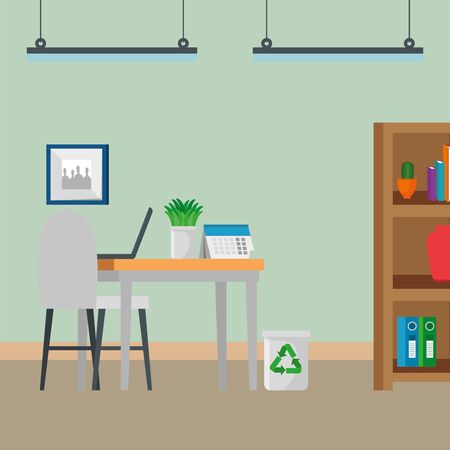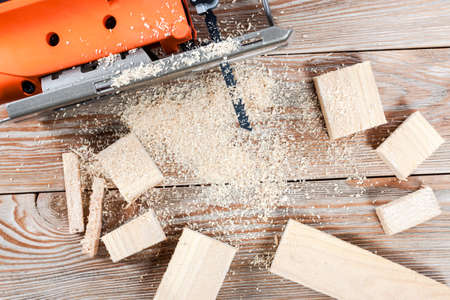1. Understanding the Zero-Waste Mindset
Designing a zero-waste home starts with understanding what “zero-waste” really means. Its more than just recycling—its about rethinking how we use resources in our everyday lives, especially in how we build and design our homes. The core principles of zero-waste living are: reduce, reuse, and recycle. These ideas can guide every step of the design process, from floor plan layout to the types of materials you choose.
Reduce: Start With Less
Reducing waste begins at the planning stage. Ask yourself: do I really need this much space? Can I design rooms that serve multiple purposes? A smaller, smarter layout uses fewer materials and generates less construction waste. Choosing durable, long-lasting products also reduces the need for replacements down the road.
Ideas to Reduce Waste in Home Design:
| Area | Zero-Waste Strategy |
|---|---|
| Floor Plan | Opt for open-concept layouts that use fewer interior walls and maximize natural light. |
| Appliances | Choose energy-efficient models that reduce your carbon footprint and last longer. |
| Lighting | Use LED fixtures and make the most of daylight through strategic window placement. |
Reuse: Give Materials a Second Life
Reusing is all about giving materials another chance before discarding them. Salvaged wood, reclaimed bricks, or even secondhand cabinets can add character to your home while keeping waste out of landfills. Look for local reuse centers or online marketplaces where you can find high-quality items at a fraction of the cost.
Common Reusable Materials:
| Material | How to Use It |
|---|---|
| Reclaimed Wood | Flooring, wall paneling, furniture |
| Salvaged Fixtures | Sinks, bathtubs, lighting |
| Vintage Doors/Windows | Add charm while reducing new material use |
Recycle: Close the Loop
If something cant be reduced or reused, think about how it can be recycled. Choose materials that are easy to recycle at the end of their life cycle. For example, metal roofing is highly recyclable and lasts for decades. When possible, select products made from recycled content—like countertops made from recycled glass or tiles made from post-industrial ceramic scraps.
Tips for Choosing Recyclable Materials:
- Select single-material items (e.g., pure metal or glass) instead of composites that are harder to break down.
- Avoid materials with toxic finishes that can’t be processed safely.
- Look for manufacturers with take-back or recycling programs.
The zero-waste mindset isnt about perfection—its about making thoughtful choices that reduce impact over time. By applying these principles early in your home design journey, youre setting a strong foundation for a more sustainable lifestyle.
2. Choosing Sustainable Building Materials
When designing a zero-waste home, selecting the right building materials is one of the most important steps. The goal is to choose options that are eco-friendly, long-lasting, and made with minimal environmental impact. This means looking for materials that are renewable, recycled, or locally sourced. Below are some popular choices that align with a zero-waste approach.
Reclaimed Wood
Reclaimed wood is salvaged from old buildings, barns, and factories. It’s not only environmentally friendly but also full of character and history. Using reclaimed wood prevents trees from being cut down and reduces waste going to landfills.
Benefits of Reclaimed Wood:
- Reduces demand for new lumber
- Adds rustic charm and uniqueness
- Often stronger than newly harvested wood
Bamboo
Bamboo is a fast-growing grass that regenerates quickly without replanting. It’s incredibly strong and versatile, making it perfect for flooring, cabinetry, and even wall treatments.
Why Choose Bamboo:
- Renewable and grows rapidly (up to 3 feet per day)
- Naturally resistant to pests and moisture
- Sleek and modern aesthetic
Cork
Cork is harvested from the bark of cork oak trees without harming the tree. It’s soft underfoot, naturally antimicrobial, and has excellent insulation properties.
Cork Advantages:
- Sustainable harvesting process
- No harmful chemicals needed in processing
- Noise-reducing and shock-absorbent qualities
Recycled Metal
Using recycled metal like aluminum or steel helps reduce mining waste and energy use. These materials can be reused over and over without losing strength or quality.
Main Benefits:
- Lowers carbon footprint compared to new metal production
- Diverse uses: roofing, fixtures, structural elements
- Adds an industrial or modern touch to interiors
Sustainable Material Comparison Table
| Material | Main Benefit | Sustainability Feature | Ideal Use Cases |
|---|---|---|---|
| Reclaimed Wood | Avoids deforestation | Sourced from existing structures | Flooring, beams, furniture |
| Bamboo | Rapidly renewable resource | No replanting needed; low pesticide use | Floors, cabinets, panels |
| Cork | Naturally insulating & antimicrobial | Bark harvested without cutting tree down | Flooring, wall tiles, underlayment |
| Recycled Metal | No loss in quality through recycling cycles | Mined once but reused many times over | Siding, roofs, fixtures, railings |
Selecting sustainable building materials not only helps protect the environment but also creates a healthier living space. By choosing options like reclaimed wood or bamboo, youre taking meaningful steps toward building a zero-waste home that reflects both your values and your style.

3. Low-Impact Finishes and Furnishings
When designing a zero-waste home, every detail counts — including the finishes on your walls and the furniture you bring into your space. Choosing low-impact options not only reduces environmental harm but also creates a healthier and more comfortable living environment for you and your family.
Non-Toxic Paints
Many conventional paints contain volatile organic compounds (VOCs) that can release harmful chemicals into the air. Opting for non-toxic, low-VOC or zero-VOC paints helps improve indoor air quality while keeping your home environmentally friendly.
Common Types of Eco-Friendly Paints:
| Type | Description | Best Use |
|---|---|---|
| Low-VOC Paint | Contains fewer volatile organic compounds than traditional paints | General interior walls |
| Zero-VOC Paint | No measurable VOCs; ideal for sensitive individuals | Kitchens, bedrooms, nurseries |
| Naturally-Derived Paint | Made from natural ingredients like clay, milk protein, or plant oils | Accent walls, artistic finishes |
Natural Sealants and Wood Finishes
If youre using wood in your home — whether flooring, cabinetry, or furniture — it’s essential to seal and protect it without introducing toxins. Natural sealants made from plant oils or beeswax are a great alternative to synthetic varnishes.
Sustainable Wood Finish Options:
- Tung Oil: Penetrates deeply into wood and provides a waterproof finish.
- Lineseed Oil: A traditional option derived from flax seeds; great for indoor use.
- Beeswax: Often used in combination with oils for added protection and shine.
Sustainably Made Furniture
The materials and manufacturing processes behind your furniture can significantly impact your homes sustainability. Look for pieces that are made from reclaimed wood, recycled metal, or other upcycled materials. Certifications like FSC (Forest Stewardship Council) or GREENGUARD can help ensure you’re choosing eco-friendly options.
Sustainable Furniture Buying Tips:
- Avoid fast furniture: These low-cost items often end up in landfills after a short time.
- Select timeless designs: Durable styles that won’t go out of fashion reduce waste over time.
- Pursue second-hand finds: Thrift stores, estate sales, and online marketplaces offer high-quality pre-loved pieces.
Your choices in paints, finishes, and furnishings play a huge role in creating a zero-waste home that’s both stylish and sustainable. Opting for natural and responsibly sourced materials ensures a cleaner environment — inside and out.
4. Maximizing Efficiency Through Smart Design
Designing a zero-waste home isn’t just about the materials you choose—its also about how you use your space. Smart design can help reduce waste, lower energy consumption, and avoid unnecessary duplication of resources. From open-concept layouts to clever lighting strategies, planning your home with efficiency in mind is a key step toward sustainability.
Space Planning That Works Smarter
Thoughtful space planning helps minimize the need for excess construction materials and cuts down on energy usage. For example, instead of building extra rooms that may go unused, consider multi-functional spaces that serve more than one purpose. A guest room can double as a home office, or a kitchen island can offer both storage and seating.
Multi-Functional Layout Ideas
| Space | Primary Use | Secondary Use |
|---|---|---|
| Guest Bedroom | Sleeping Area | Home Office |
| Kitchen Island | Food Prep | Dining & Storage |
| Mudroom | Shoe/Coat Storage | Laundry Station |
| Living Room Corner | Lounge Space | Reading Nook or Play Area |
The Power of Natural Light and Ventilation
Using natural light and airflow reduces your reliance on electricity for lighting, heating, and cooling. Large windows placed strategically can bring in daylight throughout the day while promoting cross-ventilation to keep your home cool without using an air conditioner.
Sustainable Lighting & Ventilation Tips
- Orient rooms to the sun: Place living spaces on the south side to get maximum sunlight during the day.
- Add operable windows: Windows that open allow fresh air to move through the house naturally.
- Use light-colored finishes: Light walls and surfaces reflect sunlight better, reducing the need for artificial lights.
- Install skylights or solar tubes: These options bring daylight into darker areas like hallways or bathrooms.
Avoiding Resource Duplication with Better Planning
Poorly designed homes often have duplicated features—like multiple sinks or closets in close proximity—that add costs and waste. By analyzing how each area will be used daily, you can eliminate unnecessary fixtures and furniture.
Examples of Avoidable Duplication
- Avoid separate pantries and kitchen cabinets—combine storage efficiently in one area.
- No need for dual sinks in small bathrooms—one well-placed sink saves water and counter space.
- Ditch extra hallways that take up square footage but serve no real purpose.
A smartly designed home isnt just easier to live in—it’s more sustainable too. When you plan with purpose, every square foot works harder for you and the planet.
5. Waste-Reducing Practices During Renovation
Renovating your home with a zero-waste mindset starts with planning ahead. Many construction and demolition materials end up in landfills, but with the right approach, you can reduce waste significantly. Here are practical ways to minimize renovation waste while staying aligned with sustainable material selection.
Plan for Selective Demolition
Instead of tearing everything down, consider selective demolition. This means carefully removing parts of the structure that can be salvaged or reused. It not only reduces waste but also saves money on new materials.
Items Often Salvaged During Demolition:
| Material | Potential Reuse |
|---|---|
| Cabinetry | Refinished or repurposed in kitchens, garages, or workshops |
| Flooring (wood, tile) | Reinstalled in another room or used for creative projects |
| Windows & Doors | Reused in sheds or sold/donated to salvage stores |
| Fixtures (sinks, lights) | Reinstalled or donated to local reuse centers |
Sort and Dispose Responsibly
Once demolition begins, set up separate bins for wood, metal, drywall, and general debris. This makes it easier to recycle specific materials and prevents recyclable items from going into the landfill.
Where to Take Separated Materials:
- Wood & Lumber: Local recycling centers or composting facilities (if untreated)
- Metal: Scrap metal recyclers often pay for copper, aluminum, and steel
- Drywall: Some facilities accept clean drywall for reuse in new panels
- Masonry: Crushed brick or concrete can be reused as gravel or fill material
Donate or Repurpose Usable Items
If materials are still functional but no longer needed in your design plan, consider donating them. Organizations like Habitat for Humanity ReStores accept building supplies, appliances, and furniture. You can also get a tax deduction for your donation.
Ideas for Repurposing Demo Materials at Home:
- Create shelving units from reclaimed wood planks
- Use old doors as headboards or tabletops
- Turn salvaged tiles into coasters or garden stepping stones
The key is to view every piece removed during renovation as a potential resource rather than trash. With thoughtful planning and a bit of creativity, reducing renovation waste becomes an achievable part of designing a zero-waste home.
6. Long-Term Sustainability and Maintenance
Designing a zero-waste home doesn’t stop at construction—it’s a lifestyle commitment that requires ongoing care and smart habits. Here are some practical tips to help you maintain your sustainable living space for the long haul.
Set Up a Composting System
Composting is one of the easiest ways to reduce household waste. Whether you have a backyard or live in an apartment, there are composting solutions for every space.
Types of Composting Systems
| Composting Type | Best For | Key Benefits |
|---|---|---|
| Backyard Compost Bin | Homes with outdoor space | Handles large volume, great for yard and kitchen scraps |
| Bokashi Bin | Apartments or small kitchens | Low odor, ferments all food types including meat and dairy |
| Worm Bin (Vermicomposting) | Indoor use or small patios | Produces nutrient-rich worm castings for plants |
Install Water-Saving Fixtures
Sustainable water use is crucial in a zero-waste home. Choose fixtures that reduce consumption without sacrificing performance.
Recommended Water-Saving Installations
- Low-Flow Showerheads: Use up to 60% less water than standard models.
- Dual-Flush Toilets: Offer two flush options to conserve water based on need.
- Aerated Faucets: Mix air into the water stream to reduce flow without affecting pressure.
- Rainwater Harvesting Systems: Collect rainwater for irrigation and non-potable uses.
Create Habits That Support Low-Waste Living
Sustainable homes thrive when daily habits align with zero-waste principles. Small actions can add up over time.
Simple Low-Waste Habits to Start Today
- Avoid Single-Use Products: Switch to reusable bags, containers, and utensils.
- BULK Buying & Refill Stations: Purchase pantry staples using your own jars and bags.
- Ditch Paper Towels: Use washable cloths or rags made from old T-shirts or linens.
- Simplify Cleaning Routines: Make homemade cleaners using vinegar, baking soda, and essential oils.
- Mend and Repair: Fix clothes, furniture, or appliances instead of replacing them right away.
A zero-waste home is more than just sustainable materials—its about making thoughtful choices every day. With the right systems and habits in place, maintaining your eco-friendly lifestyle becomes second nature.


